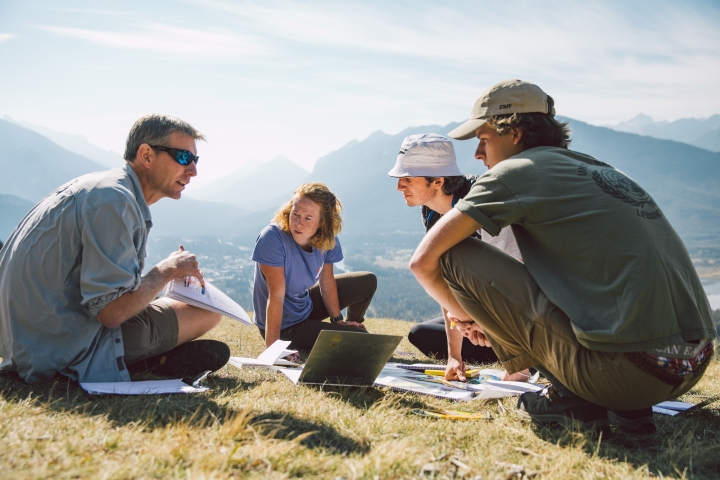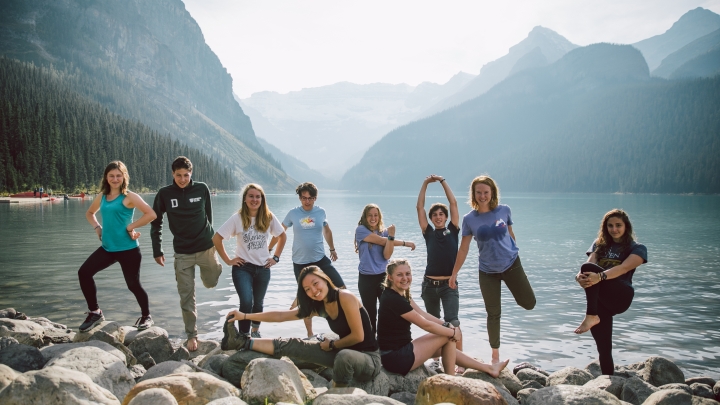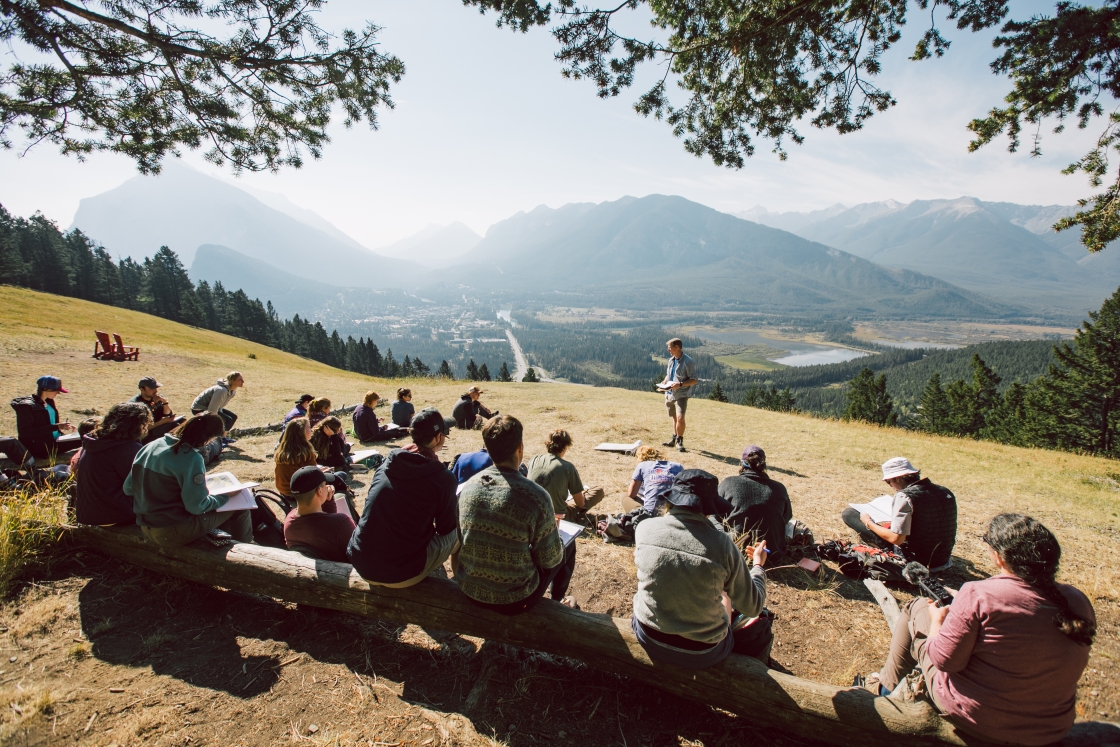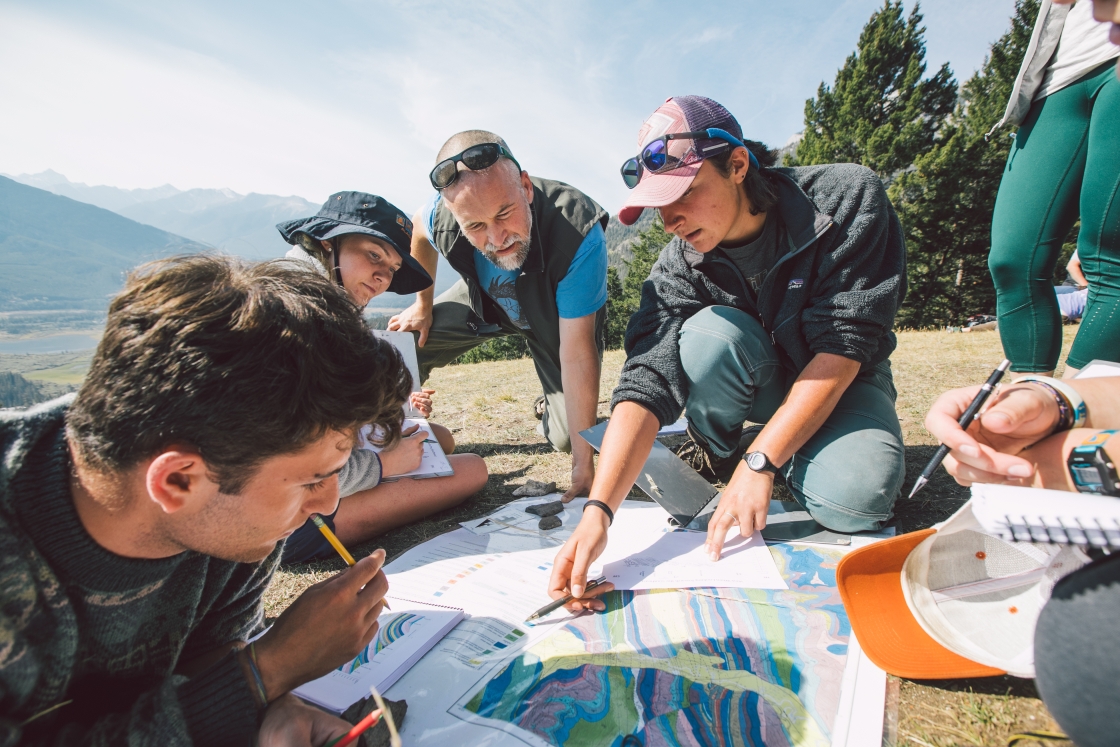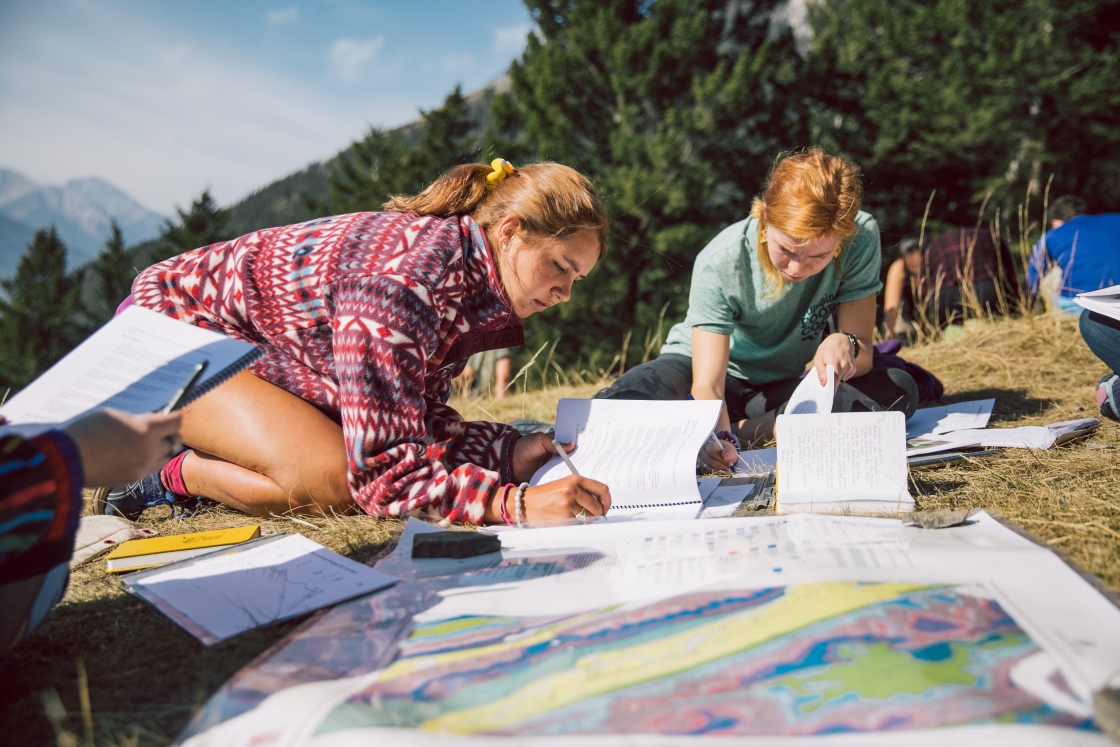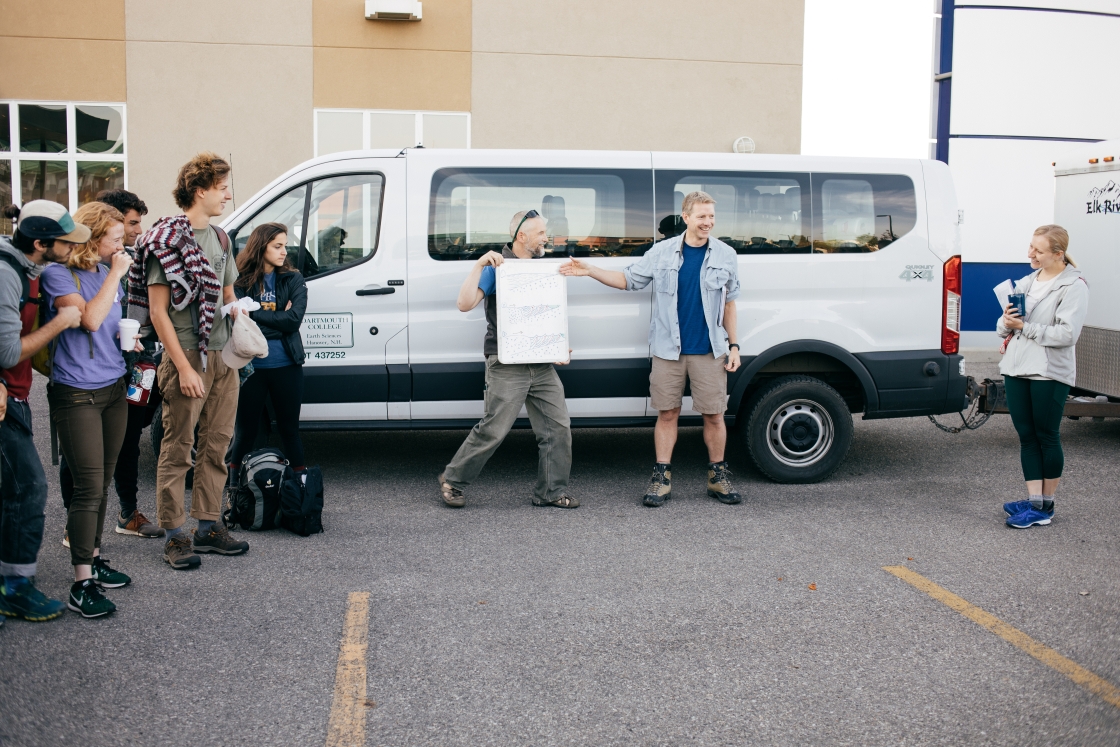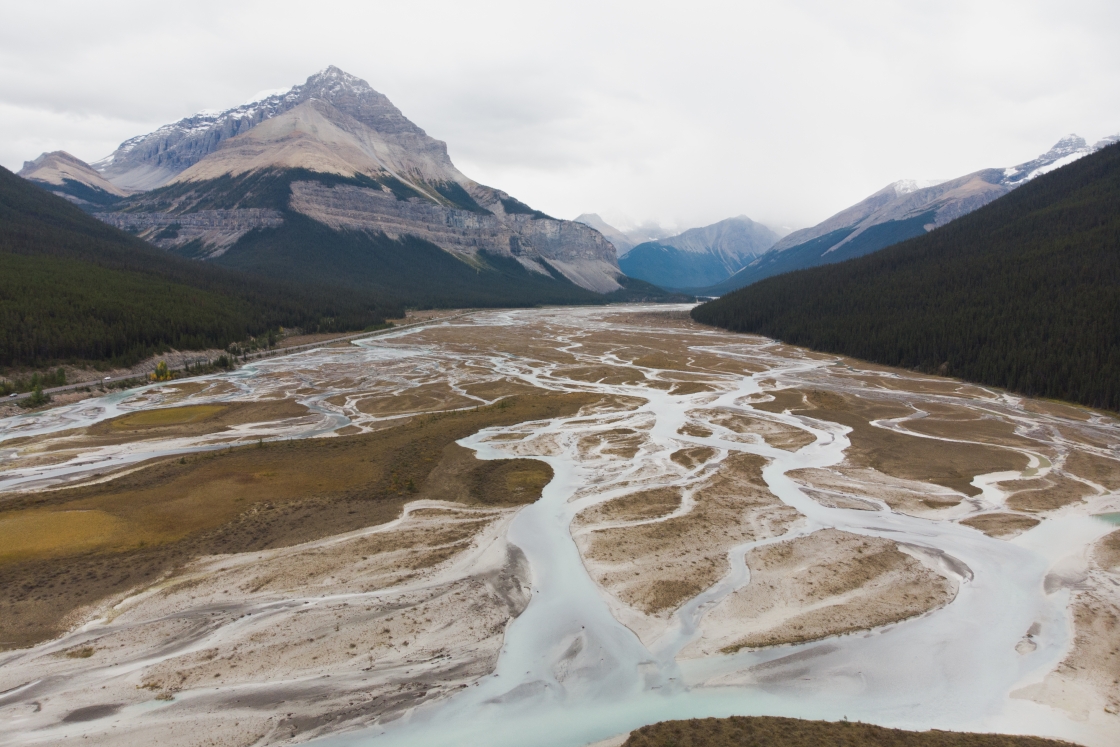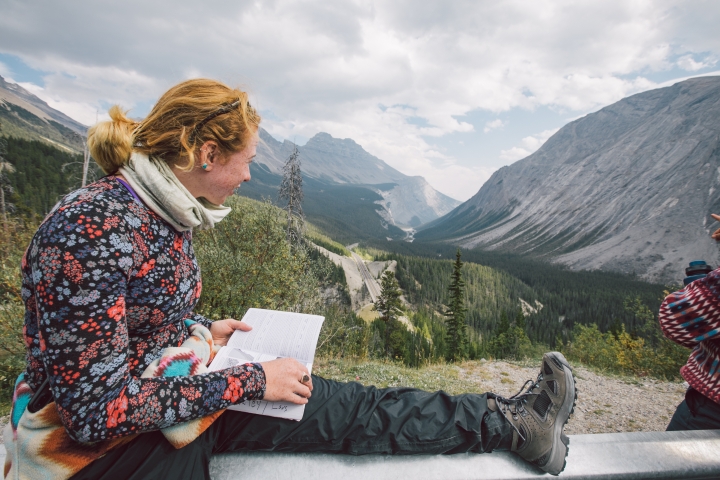Turning Students Into ‘Stretchies’
Two days earlier, the students, who spent the summer taking the required “Earth Sciences 40” course to learn mineralogy and structural geology for the Stretch, gather at a Holiday Inn in Calgary, Alberta, for their first night together as Stretchies.
They are met by Osterberg and Hawley and two graduate student teaching assistants who have spent three weeks driving from Hanover in Stretch vans loaded with camping gear and research equipment for the entire term. Over piped-in music in the hotel’s dining room, which they have commandeered for an orientation session, Hawley tells the students, “You guys all came in as individuals, and you are now a group.”
And being part of a group of this size and with such a complex itinerary means being on “expedition behavior”—thinking more conscientiously about courtesy, safety, and preparation than they might if they were traveling alone. “When you bump it up a notch, it makes the whole expedition go smoother,” he says.
At 8 the next morning, the group meets in the hotel parking lot to talk about the day’s goals before setting off across the plains into the Canadian Rockies—a drive Osterberg describes as “one of the most spectacular I’ve ever experienced.”
Berit DeGrandpre ’20 looks out across a glacial valley. (Photo by Robert Gill)
The drive includes a full day’s worth of learning, punctuated by radio conversation between the vans as the professors and TAs point out interesting geological features in the landscape. During a stop at an overlook on Mount Norquay, above the village of Banff, the students draw geological cross-sections of the mountains surrounding the Bow Valley.
In the afternoon, the TAs give a crash course on using a Brunton—the geologist’s equivalent to a Swiss Army knife, combining compass, clinometer, and level—and how to take notes in the field. After a scramble down a steep slope, the students put their new skills to work examining hoodoos—strange, tower-like formations of eroded sedimentary rock whose origins are at the center of a scientific debate.
Dinner is takeout pizza on the banks of Lake Louise. Then the students pile back into the vans for the ride deeper into the Rockies and the wilderness hostel that will be their home for the next several days as they explore the Athabasca Glacier.
Though they will be with the students through only the first segment of the Stretch, Hawley and Osterberg are very conscious that these first days are foundational for the entire nine-week journey from Alberta to Arizona.
“From the first moment they land at the airport, we’re trying to set the tone, showing them that we’re here to support you, but you have responsibility,” says Osterberg. “You’re representing Dartmouth.”
